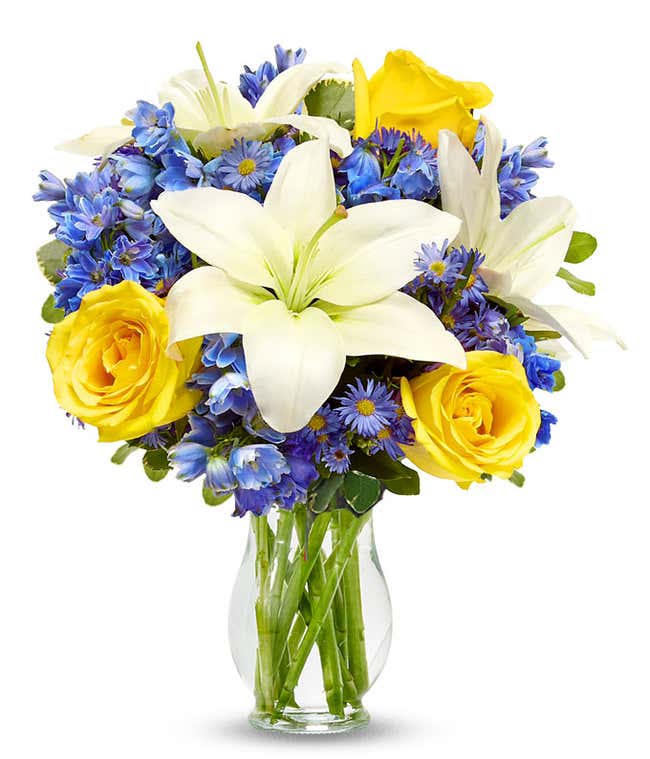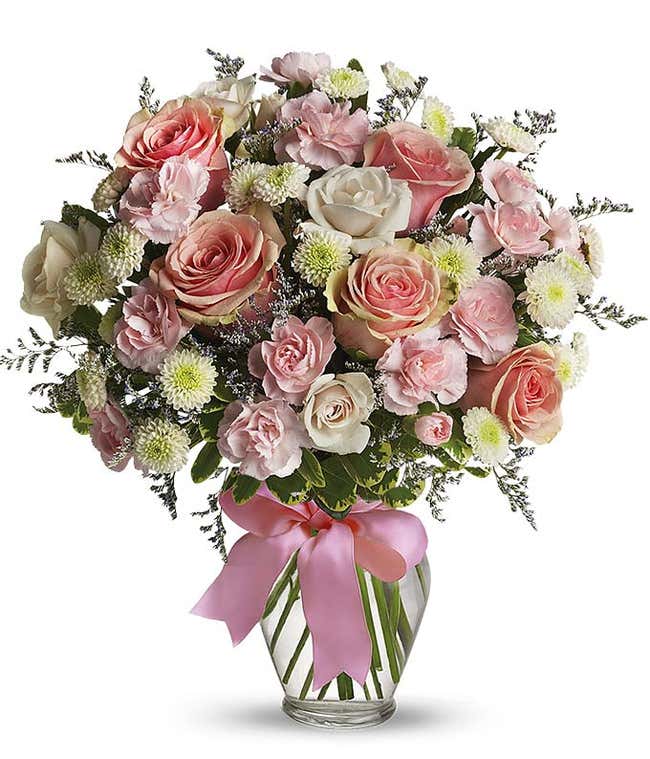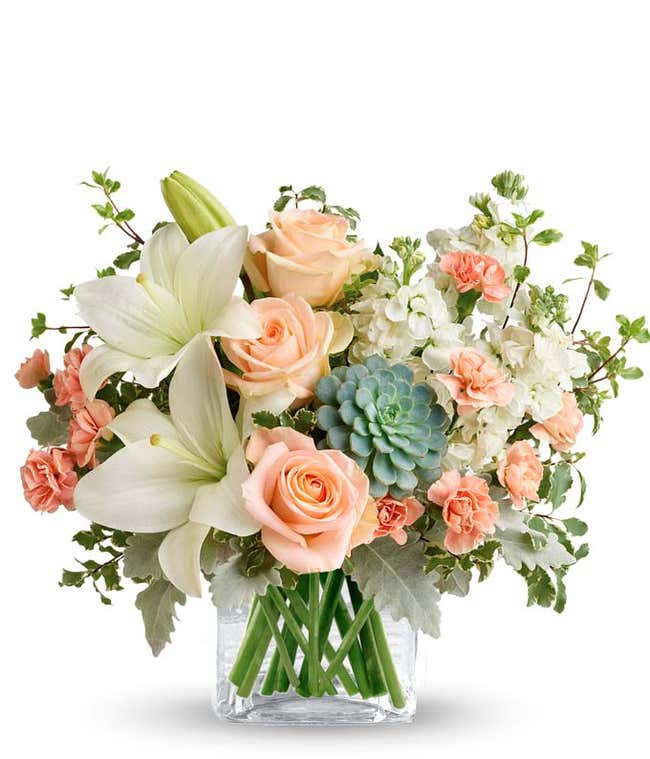- Flower Resource Guide Home
- Occasions
- Anniversary
- Birthday
- Business
- Christmas
- Christmas Around the World
- Christmas Decorating
- Christmas History Trivia
- Funeral & Sympathy
- Funeral and Sympathy Flowers
- Funeral and Sympathy Etiquette
- Types of Funeral Flowers
- Get Well
- Halloween
- This History of Halloween
- Halloween Decorating & Craft Ideas
- Mother's Day
- Gift Ideas for Mother's Day
- What Day Does Mother's Day Fall On?
- Mother's Day History
- New Baby
- Thank You
- Thanksgiving
- History of Thanksgiving
- Thanksgiving Flowers & Crafts
- Valentine's Day
- History of Valentine's Day
- Valentine's Day Flowers & Gifts
- Decorating with Flowers
- Flower & Plant Care
- How to Keep Flowers Fresh
- Flower Meanings
- Meaning of Roses
- Floral Astrology
- Flowers for Men
- Fun Flower Facts
- What are the Different Parts of a Flower?
- What are the Most Popular Houseplants?
- State Flowers
- New Jersey
- North Carolina
- Flower Names for Kids
- How to Make Chocolate Covered Strawberries
- What is the Purpose of Flowers?
- Benefits of Flowers and Plants
On the second Sunday in May, American children of all ages treat their mothers to something special. It is the one day out of the year when children, young and old, try to show in a tangible way how much they appreciate their mothers.
England was one of the first countries to set aside a day to recognize mothers. In the eighteenth century when many people worked as household servants for the rich, "Mothering Sunday" was reserved for them to return home to be with their mothers. Though this custom stopped when the Industrial Revolution altered the working and living patterns of the people, one Sunday for Mothers was established as a holiday in the twentieth century.

The idea of celebrating Mother's Day in the US was first conceptualized by Julia Ward Howe (famous lyricist of "The Battle Hymn of the Republic"). In 1870, Julia Ward Howe wrote the "Mother's Day Proclamation". Distressed over what she saw as the unnecessary deaths of young men during the Civil War, Howe called upon mothers to come together and protest the senselessness of "sons killing the sons of other Mothers", and to unite and celebrate an international Mother's Day that would celebrate both peace and motherhood. She originally proposed converting July 4th into Mother's Day as a way to dedicate the nation's anniversary to peace. By 1873, eighteen North American cities observed the new Mother's Day holiday. However, Howe was the principal financier of these celebrations, and as she stopped contributing, many cities and states ceased observing the holiday. The idea for a day set aside to honor Mother's lost momentum until the early 1900s when Anna Jarvis again began campaigning for the creation of an official Mother's Day in remembrance of her mother and in honor of peace.
Anna Jarvis was the daughter of Anna Reeves Jarvis, and it is said that she swore at her mother's gravesite that she would dedicate a day to honor mothers, both living and deceased. Anna's mother had provided strength and support as the family made their home in West Virginia and Philadelphia, Pennsylvania where her father served as a minister. As a girl, Anna had helped her mother take care of her garden, mostly filled with white carnations, her mother's favorite flower.
When Mrs. Jarvis died on May 5, 1905, Anna was determined to honor her. She asked the minister at her church in West Virginia to give a sermon in her mother's memory. On the same Sunday in Philadelphia, their minister honored Mrs. Jarvis and all mothers with a special Mother's Day service. Anna Jarvis began writing to congressmen, asking them to set aside a day to honor mothers. In 1910, the governor of West Virginia proclaimed the second Sunday in May as Mother's Day and in 1914 the bill passed in Congress. President Woodrow Wilson signed the bill, declaring the second Sunday in May as Mother's Day - forever establishing Mother's Day as an official holiday in the U.S.
On Mother's Day morning some American children follow the tradition of serving their mothers breakfast in bed. Other children will give their mothers gifts which they have made themselves or bought in stores. Adults often give their mothers red carnations, the official Mother's Day flower.
If their mothers are deceased they may bring white carnations to their grave sites. This is the busiest day of the year for American restaurants. On her special day, family members do not want Mom to cook dinner!
Celebrations of Mother's Day throughout the World
As with many holidays and celebrations that are observed worldwide, each country has its own unique way of honoring the holiday to accommodate for indigenous beliefs and practices. Although Mother's Day is observed in nearly every country, every country has a particular way of celebrating this special day and honoring our Mothers. Read on for a few of these traditions.

Argentina
It is customary to honor Argentinean Mothers with dinners, poems and special gestures of attention. Children write letters in school or make cards and crafts to take home. Husbands cook and clean and look after the family, allowing the mother to relax and enjoy the day. Moms are almost certain to receive flowers, cards, candy, jewelry or an unexpected surprise.
France
Inspired by American soldiers in World War I, France celebrated Mother's Day first in 1918. The Minister of the Interior created the official day in 1920, declaring December 19 La Fete de Meres, Mothers' Day. The focus then was on the re-population of France following the high rate of attrition from WWI (known in France as the Great War). Mothers with four or five children were awarded a bronze medal; those with six or seven children would receive a silver medal, and eight or more offspring garnered the gold. This tradition was abandoned when a more modern version of Mother's Day came from the Vichy government, which on May 25, 1945, instituted the National Day of Mothers. Today a common gift is a cake shaped to resemble a bouquet of flowers, along with candies, flowers, cards and perfumes.
India
A westernized version of Mother's Day is officially observed on May 10 in India, though cities and cultural centers
tend to celebrate it more than the smaller settlements. On this day mothers receive flowers, a prepared meal, cards or
a phone call.
Apart from the modern version of Mother's Day, Hindus have long celebrated a 10-day festival in October called Durga
Puja. As the ancient Greeks honored their earth goddess, the Hindu holiday praises their divine mother, Durga. This
ancient festival has evolved into one of the biggest events in India. Families spend weeks preparing food and gifts
for friends and cleaning and decorating their houses for parties.
Mexico
In 1922 a journalist, Rafael Alducín wrote an article advocating the celebration of Mother's Day in all of Mexico. Though the practice had already spread to parts of Mexico, Alducín's article led to widespread observance of the holiday, and May 10 is now the universal day of celebration of "Dia de las Madres" in Mexico.
Celebrations include starting the morning with a song sung to the mother in the morning, followed by a family breakfast or brunch. Typically, the mother will also receive flowers, chocolates, or sentimental cards (May 10 is the largest day for sending cards in Mexico).
United Kingdom
Like the rest of Europe, England and Ireland observed the mid-Lent holiday and honored and decorated their "Mother Church", the church where they were baptized. The church eventually extended the observation to honor all mothers. The English called this Mothering Sunday and, in the 1700's they observed it by taking a break from the fasting and penitence of Lent and having a family feast. Mothering Sunday fell out of practice in the early 1900's, but the tradition was reinstated after the end of WWII, inspired largely by the United States. Today the UK's Mother's Day continues in much the same way as the old tradition, with cards and dinners in honor of Mom.

Canada
Canada was one of the first nations to pick up the US version of Mother's Day, making it a national holiday in 1909. The customs largely reflect those of its southern neighbor, although in Canada there seems to be an added emphasis on doing chores for the Mother and cooking her supper.
China
While China's Mother's Day is based primarily on the practices of the United States, it is interesting to note that most Chinese names begin with a character signifying Mother in honor of one's maternal heritage.
Denmark
In Denmark dining out to lunch is a popular Mother's Day pastime. The day is called Mors Dag.
Ethiopia
Mother's Day in Ethiopia occurs in mid-fall when the rainy season ends. Called "Antrosht", Ethiopians celebrate by making their way home when the weather clears for a large family meal and a three day-long celebration. For the feast the children bring ingredients for a traditional hash recipe, which the mother prepares for the family. After the meal a celebration takes place. The mothers and daughters ritually anoint themselves with butter and dance while the men sing songs in honor of family and heroes. This cycle of feasting and celebration lasts two or three days.
Italy - The Italians celebrate La Festa della Mamma with a big feast and a cake made in the shape of a heart. Typically Italian schoolchildren will make something to bring home to their Mothers, and the family will take care of the chores for the day.
Singapore - Singapore's Mother's Day places a heavy emphasis on marketing a wide variety of gifts including spa packages, vacuums, hampers, jewelry and other more traditional presents such as flowers.
Sweden - Sweden's Mother's Day, which takes place on the last Sunday in May, has a strong charitable focus: the Swedish Red Cross sells small plastic flowers leading up to the holiday, and the proceeds raises are given to poor mothers and their children.
Did you know? Fun Facts and Trivia about Mother's Day...
- The National Retail Foundation predicts Mother's Day is a $14 billion industry
- Google Trends shows a sharp spike in search traffic for Mother's Day on Mother's Day in the US and UK and the month leading up to it
- Florists see their biggest sales in May
- Flowers are believed to be one of the most popular gifts to send Mom on Mother's Day largely in part because Anna Jarvis handed out carnations to the church-goers during the original days of celebrating Mother's Day
- US restaurants claim that it is the busiest day of the year
- Long Distance telephone calls peak on this day
- The US Postal Service experiences increased volume during the surrounding days of Mother's Day
- The International Mother's Day Shrine is a church in Grafton, West Virginia, was the site of the first unofficial Mother's Day celebration as created by Anna Jarvis, May 10, 1907
- More than 83 million mothers are living today in the United States according to the U.S. Census Bureau. There are approximately 2 billion mothers living worldwide.
- Modern moms have an average family size of two children, while mothers in the 1950s had an average of 3-5 children, and in the 1700s, women gave birth to an average of 7-10 children!




